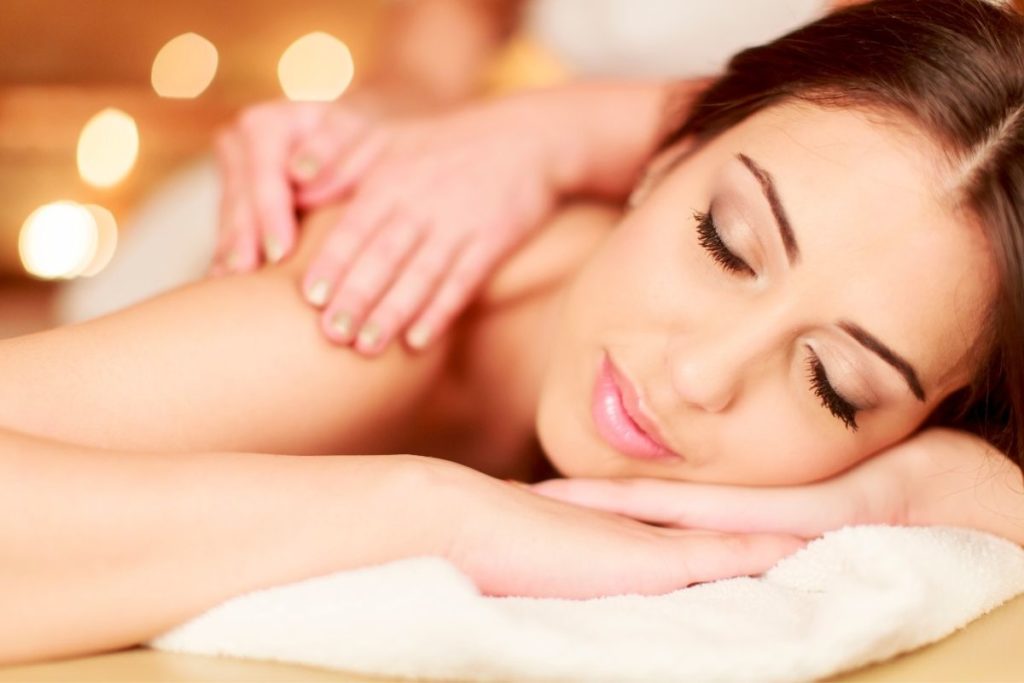
If you’re a fan of deep tissue massage, you might glance right past the “Swedish massage” option on a spa menu. Perhaps you think it will be too gentle to be effective. Or maybe your personal motto is, “No pain, no gain.”
Is that really the case, though? Is deep tissue massage better or more effective than Swedish massage? Exactly what is a Swedish massage, anyway?
In this post, we’ll dive into the history of Swedish massage and how it came to be the most popular type of massage around the world. We’ll also discuss some basic techniques you can expect during your massage, as well as its many benefits.
Let’s get started!
What Is a Swedish Massage?
As the name suggests, this type of massage originated in Sweden in the 1830s.
Swedish fencing instructor Per Henrik Ling reportedly cured his elbow injuries using percussion strokes around the affected area. In the years that followed, he developed the other strokes used by massage therapists today.
These include:
- Effleurage (long gliding strokes towards the heart)
- Petrissage (kneading, rolling, lifting, and squeezing)
- Friction (a stronger pressure stroke to reach deeper muscles)
- Tapotement (a rhythmic tapping or chopping motion)
- Vibration (shaking or trembling the skin with the palm or fingertips)
- Stretching (active or passive movements of the joints)
This new massage technique arrived in the US in the 1850s via two Swedish brothers, Dr. Charles Taylor and Dr. George Taylor. It quickly became the foundation for students wanting to learn massage therapy, and it continues to be the same today.
What Massage Benefits Can I Expect?
Like other types of massage, the main goal is to relax, refresh, and energize the body. Here are some of the physical and mental benefits you can enjoy from your massage session:
- Relieving muscle tension, cramps, and spasms
- Loosening and stretching the joints and connective tissues
- Increasing blood flow and circulation
- Lower blood pressure
- Calming the central nervous system
- Faster healing after injuries or surgeries
- Better lymphatic drainage of lactic acid and other wastes
- Improved sleep
- Reduced feelings of stress, anxiety, and depression
- Relief from pain and inflammation
It’s true that Swedish massage (generally speaking) uses lighter pressure than deep tissue treatments. Does that mean it’s any less effective?
Not at all! One study found that people with generalized anxiety disorder who received Swedish massage twice a week had significant reductions in their anxiety scores. Another study showed measurable reductions in blood pressure, heart rate, and inflammatory markers after receiving regular massages.
Is It Time for Your Next Massage?
So, what is a Swedish massage? It’s the most popular massage modality in the world for good reason!
It has countless benefits for your physical, mental, and emotional health. It involves light-to-firm pressure that’s ideal for people who can’t tolerate (or don’t want) a stronger, deeper massage.
Even for those who usually prefer deep tissue massages, sometimes Swedish might be more appropriate for your body. It’s ideal for anyone who needs to relax, unwind, and destress. Isn’t that what all of us need more than ever right now?
Whether you choose Swedish or deep tissue massage, Simply Massage is ready to welcome you for your next session in Avon or Glenwood Springs. Give us a call at 970-748-1600 or book your treatment online.
We’ll see you soon!
